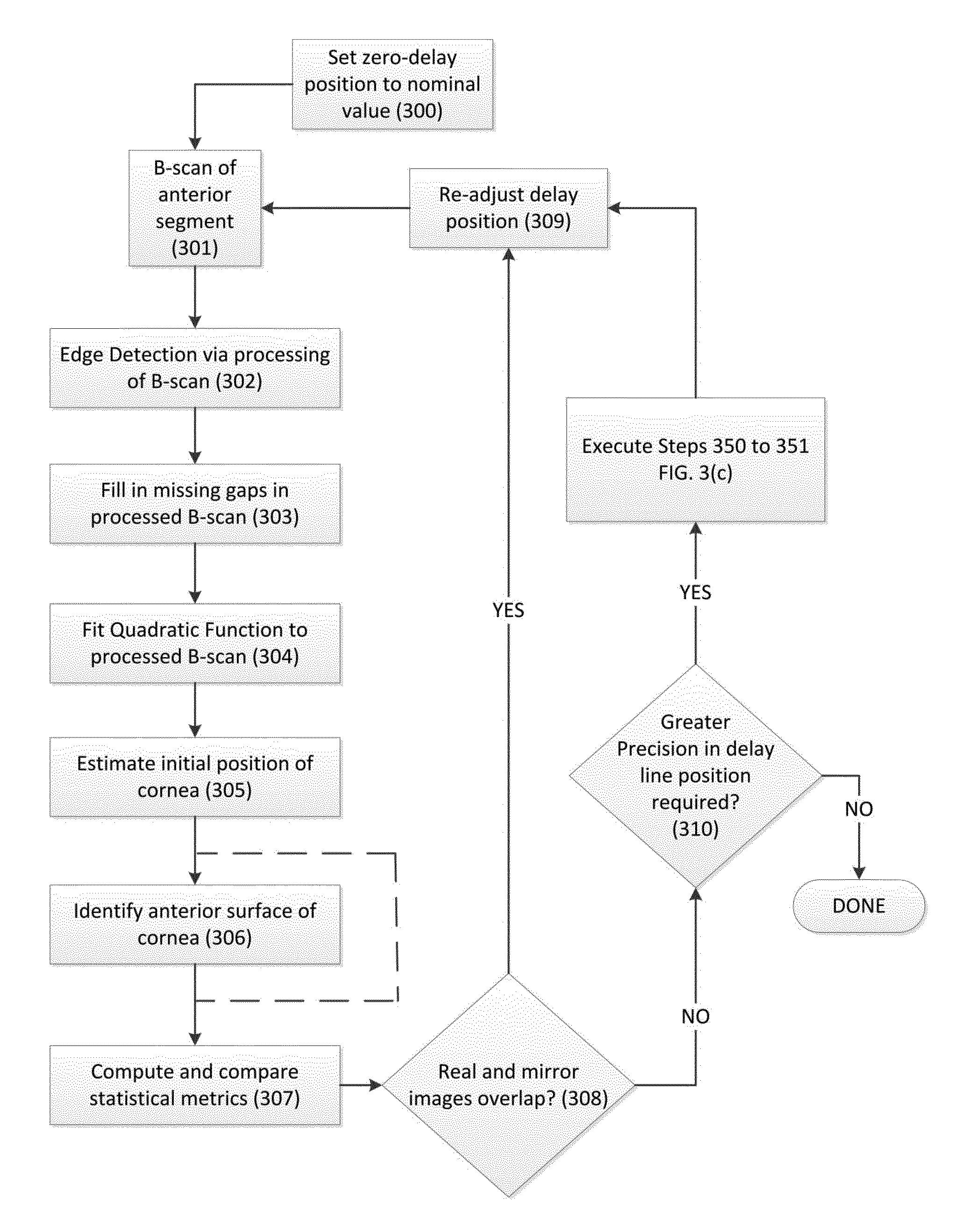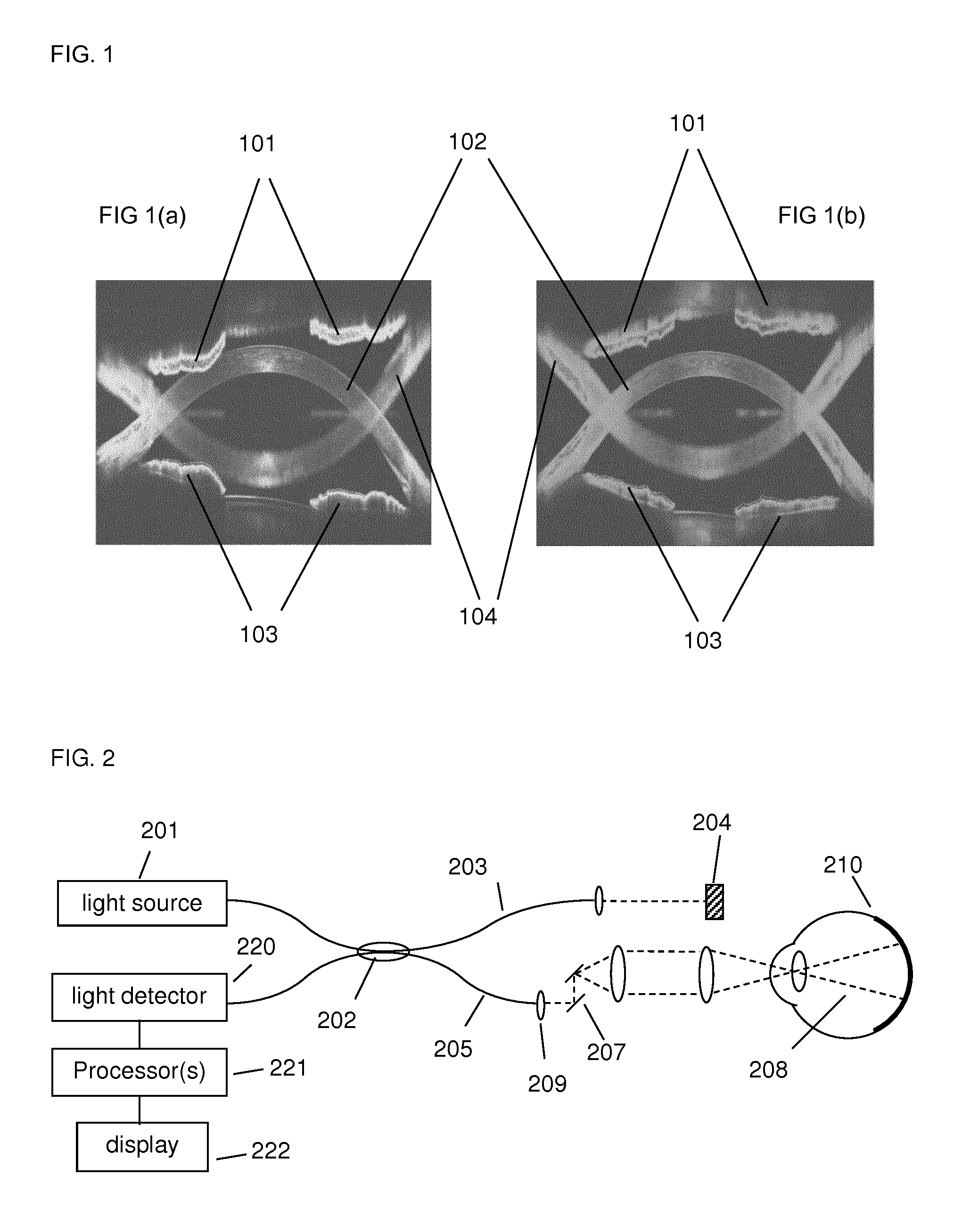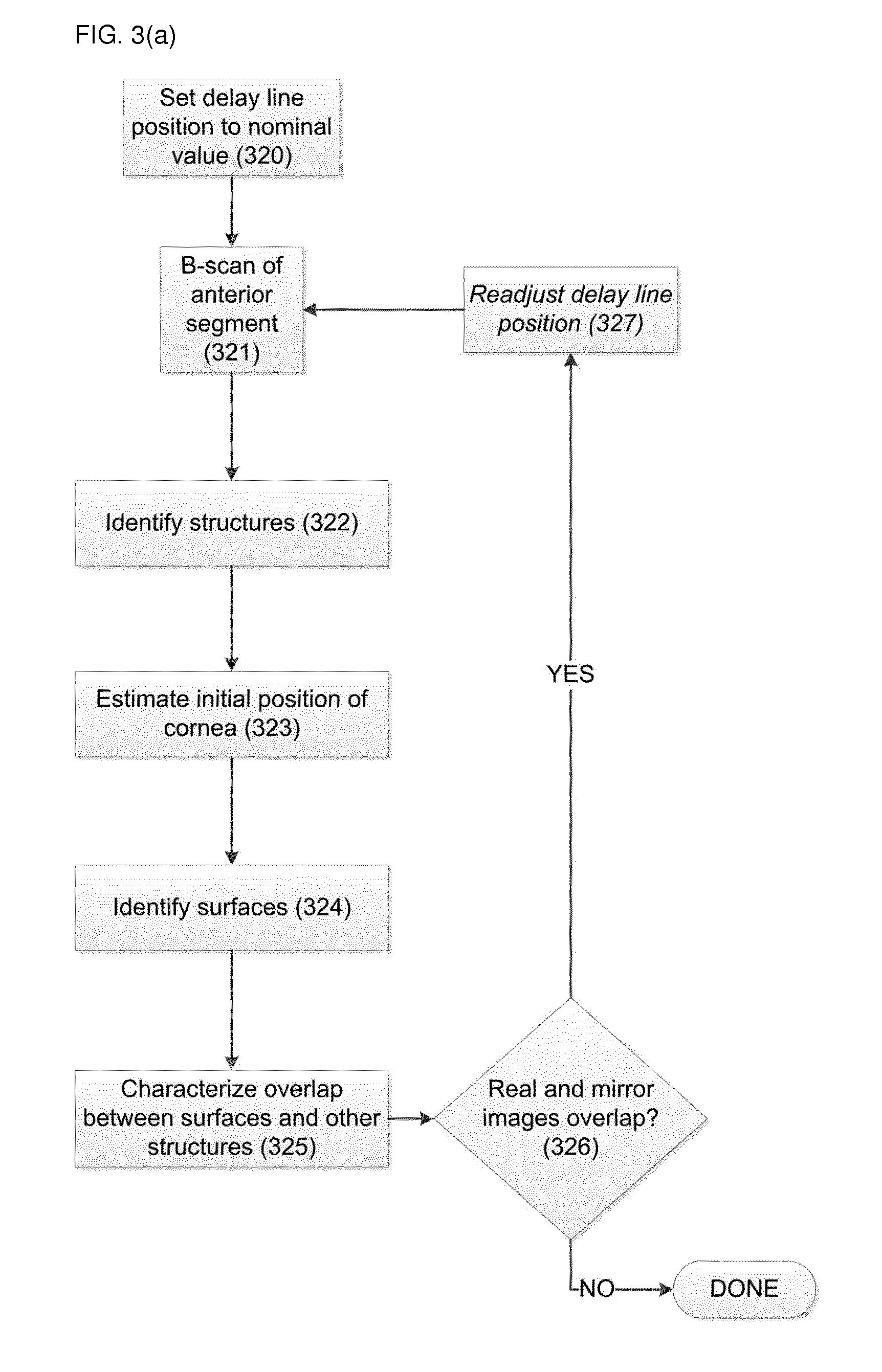Systems & methods for ocular anterior segment tracking, alignment, and dewarping using optical coherence tomography
a technology of optical coherence tomography and system, applied in the field of methods and systems in optical coherence tomography, can solve problems such as data interpretation or processing, patient using optical coherence tomography presents different problems, and restricted depth and breadth of imaging, so as to achieve accurate dewarping and improve accuracy.
- Summary
- Abstract
- Description
- Claims
- Application Information
AI Technical Summary
Benefits of technology
Problems solved by technology
Method used
Image
Examples
Embodiment Construction
[0055]A generalized Fourier Domain optical coherence tomography (FD-OCT) system used to collect an OCT dataset suitable for use with the present set of embodiments is illustrated in FIG. 2. An FD-OCT system includes a light source, 201, typical sources including, but not limited to, broadband light sources with short temporal coherence lengths or swept laser sources. Light from source (201) is routed, typically by optical fiber (205), to illuminate the sample (210), which could be any of the tissues or structures with an eye. The light is scanned, typically with a scanner (207) between the output of the fiber and the sample, so that the beam of light (dashed line 208) is scanned over the area or volume to be imaged. Light scattered from the sample is collected, typically into the same fiber (205) used to route the light for illumination. Reference light derived from the same source (201) travels a separate path, in this case involving fiber (203) and retro-reflector (204). Those ski...
PUM
 Login to View More
Login to View More Abstract
Description
Claims
Application Information
 Login to View More
Login to View More - R&D
- Intellectual Property
- Life Sciences
- Materials
- Tech Scout
- Unparalleled Data Quality
- Higher Quality Content
- 60% Fewer Hallucinations
Browse by: Latest US Patents, China's latest patents, Technical Efficacy Thesaurus, Application Domain, Technology Topic, Popular Technical Reports.
© 2025 PatSnap. All rights reserved.Legal|Privacy policy|Modern Slavery Act Transparency Statement|Sitemap|About US| Contact US: help@patsnap.com



